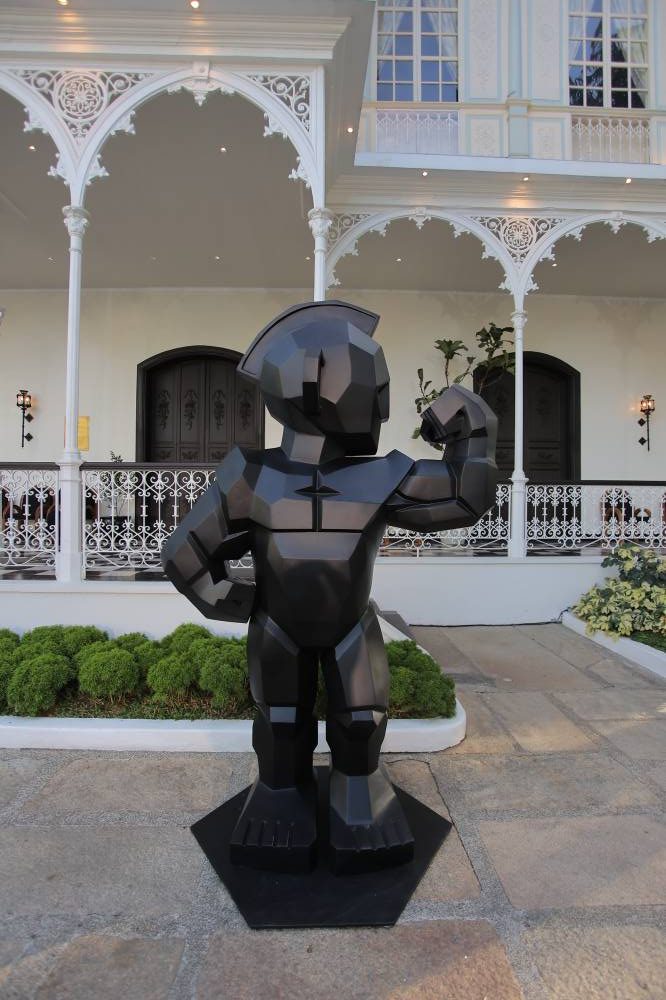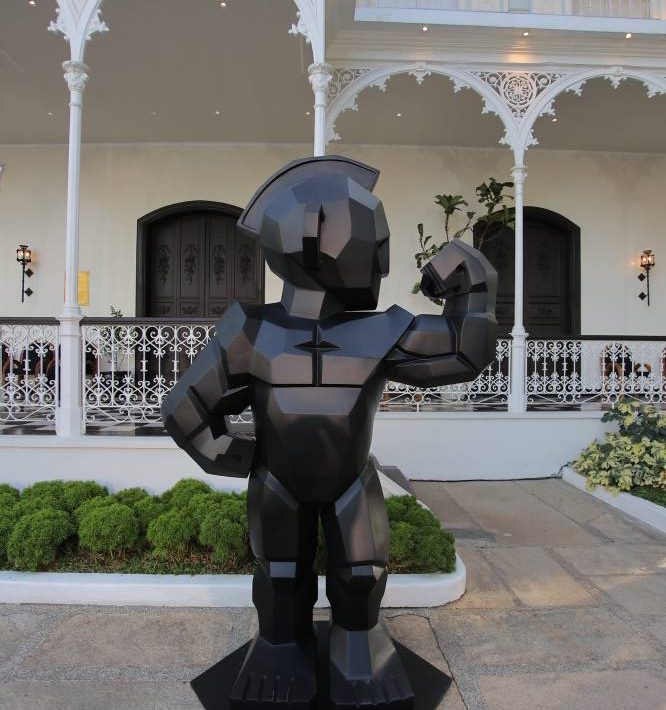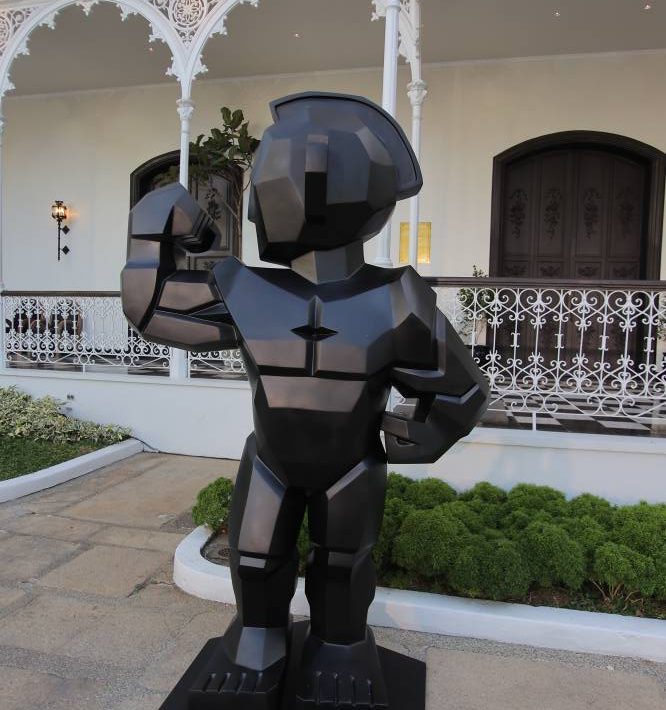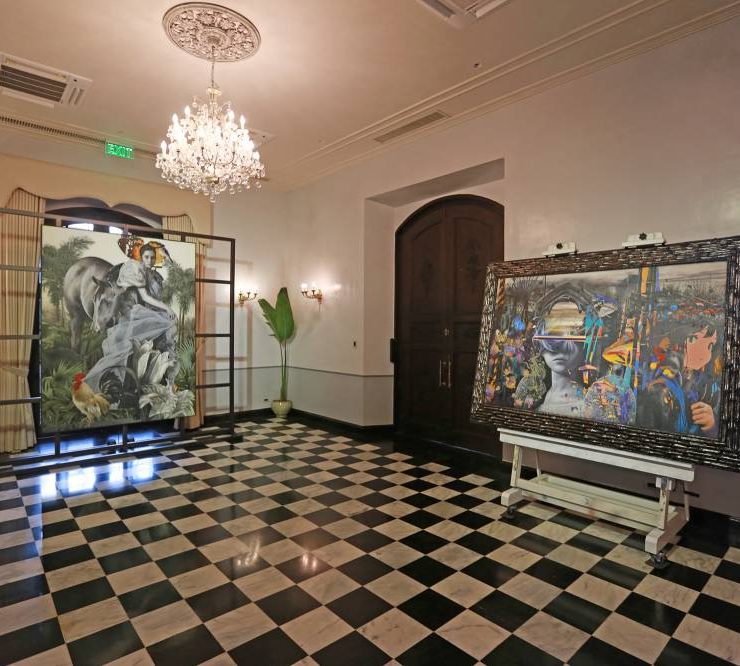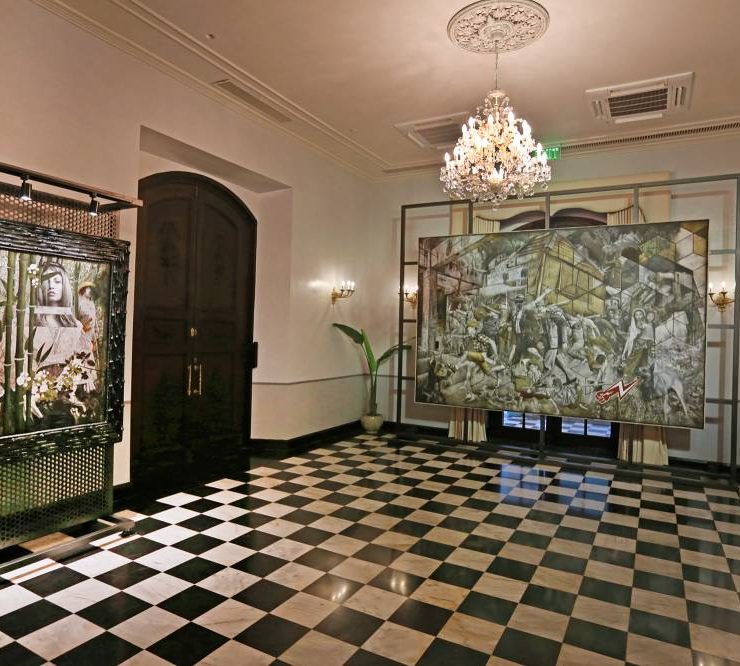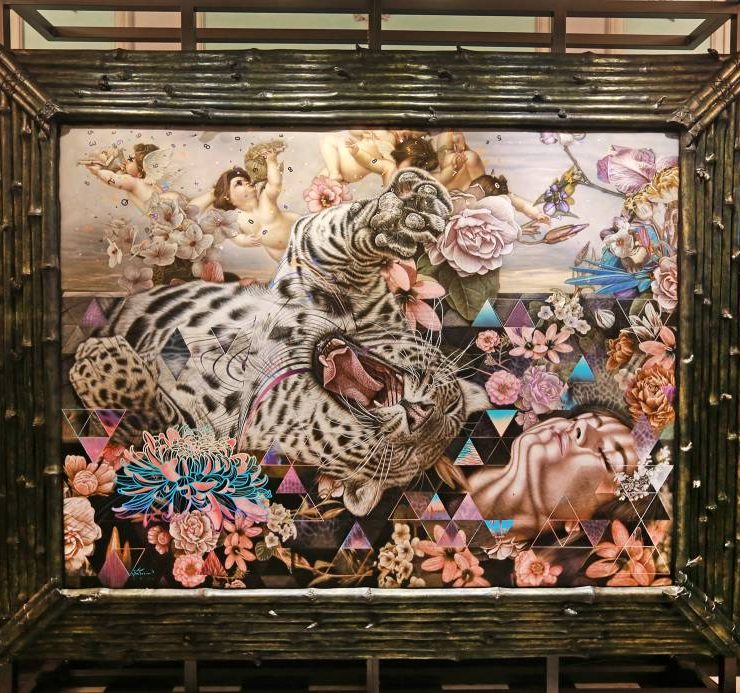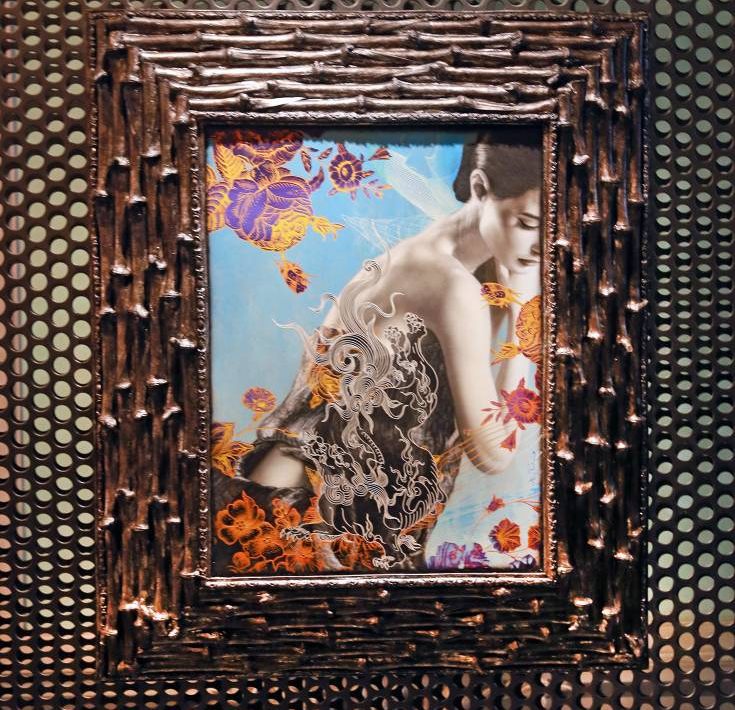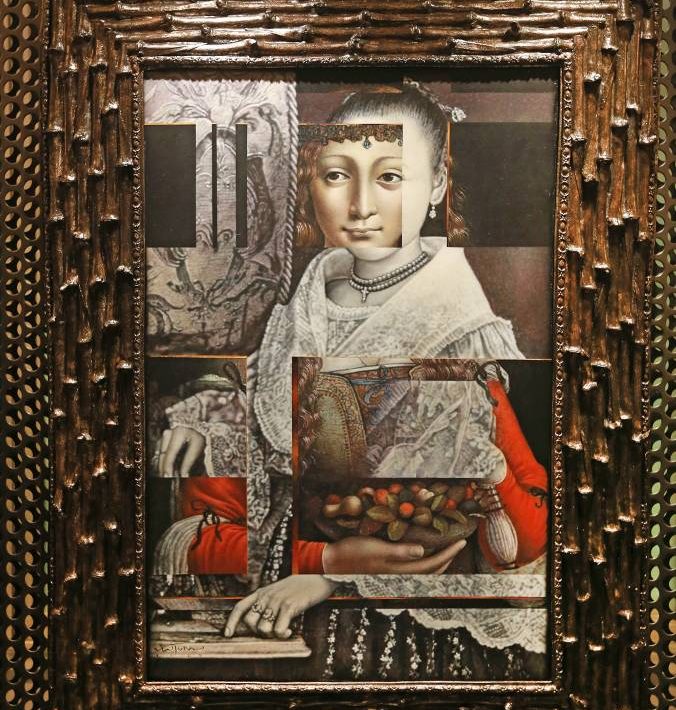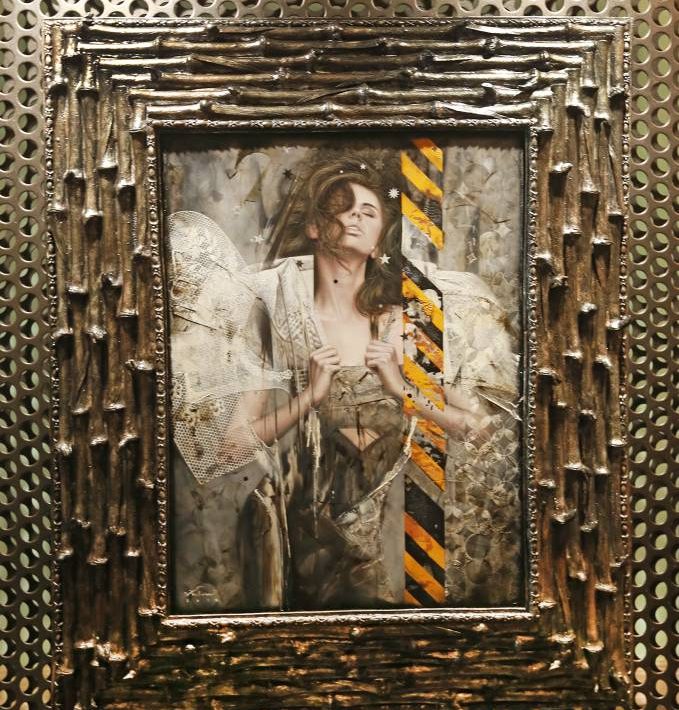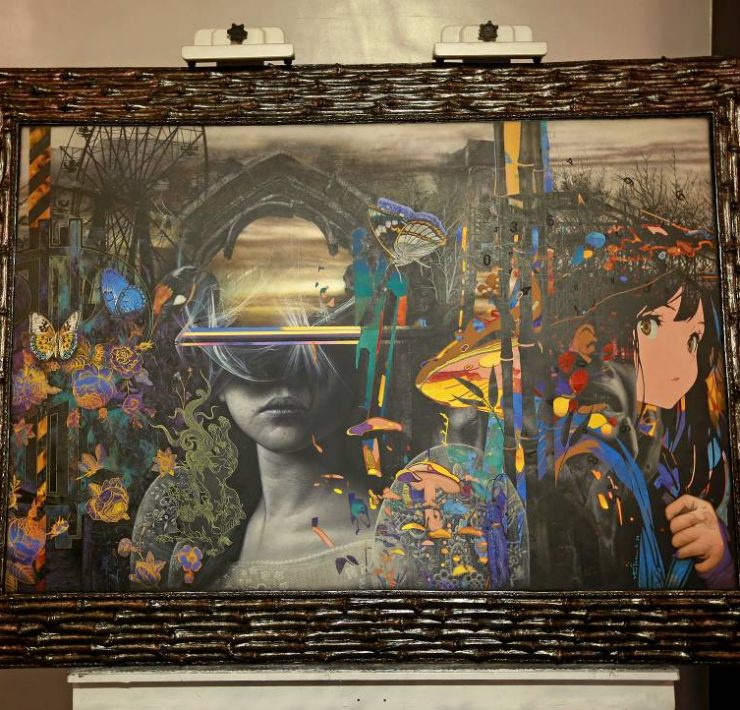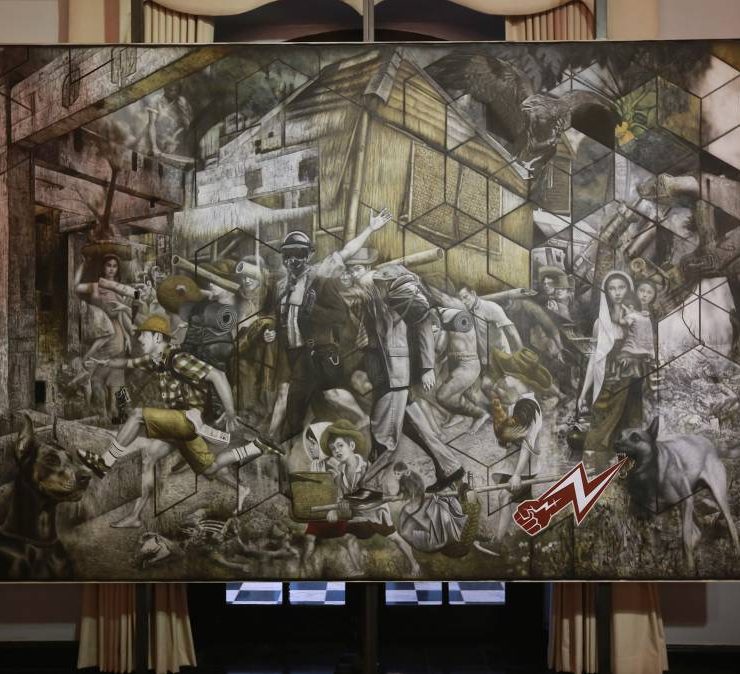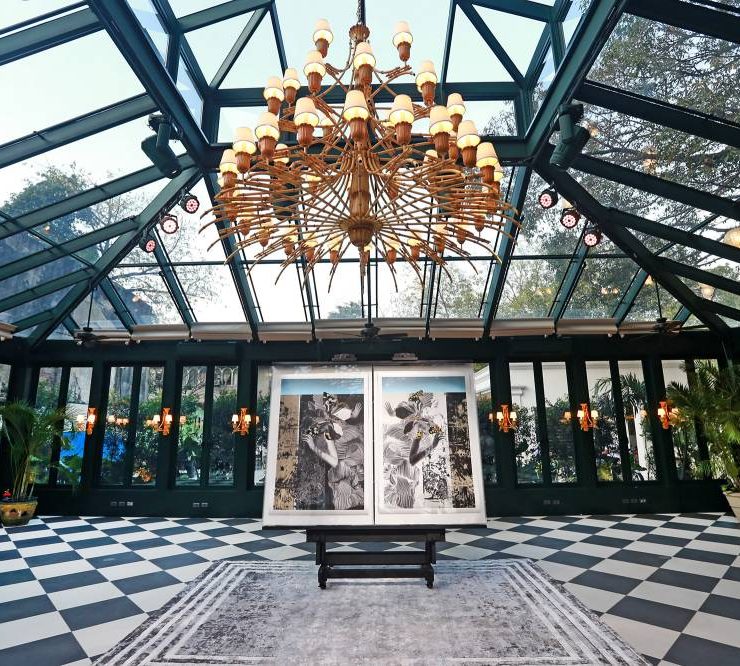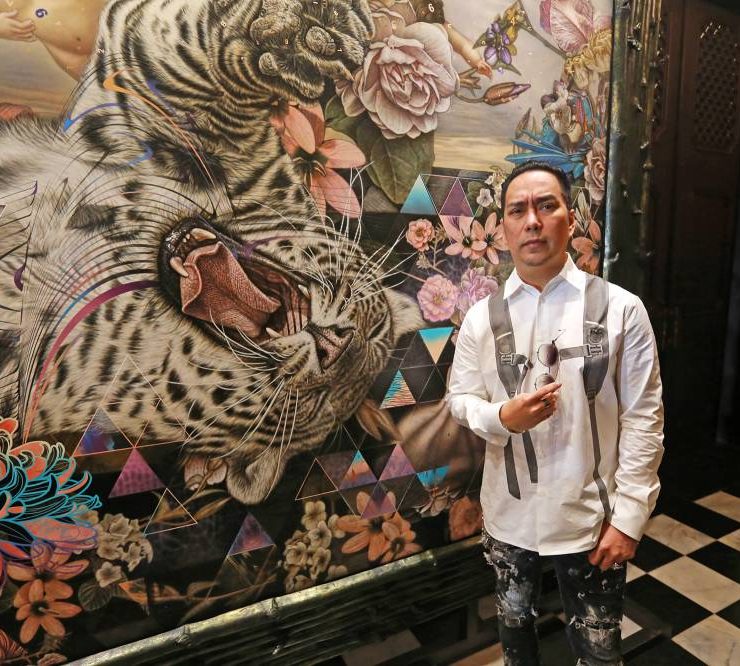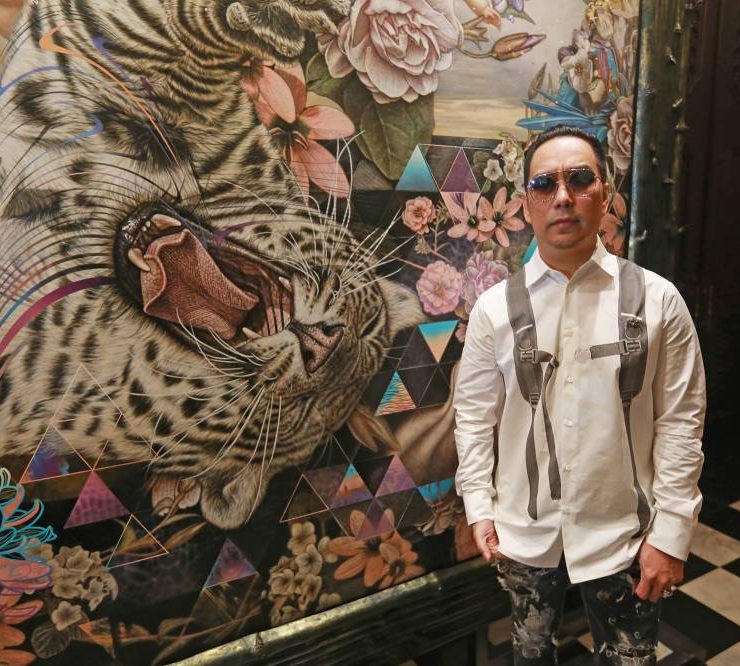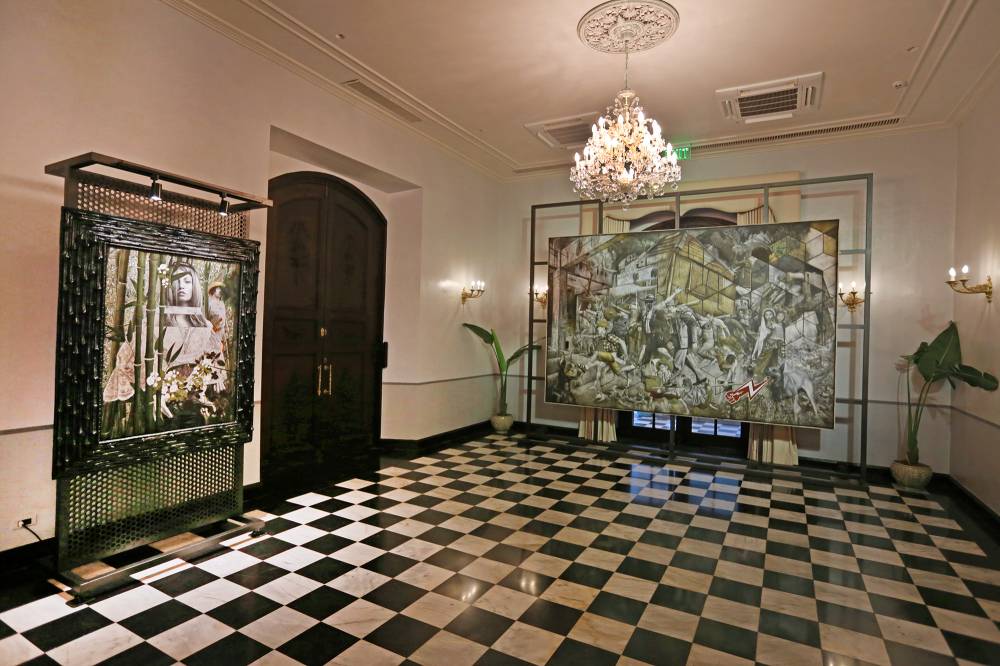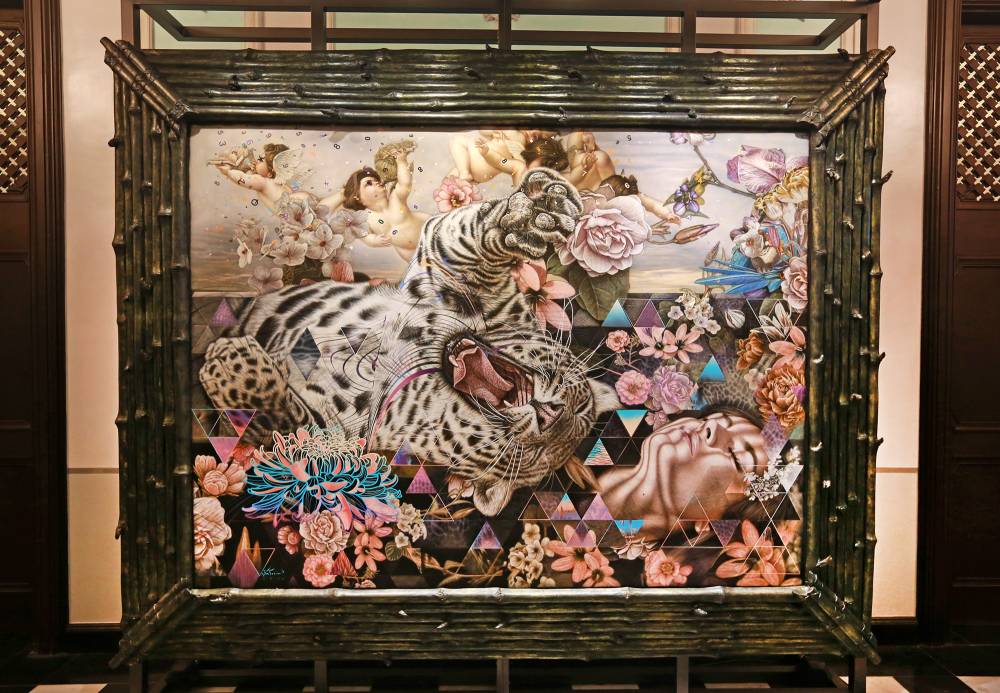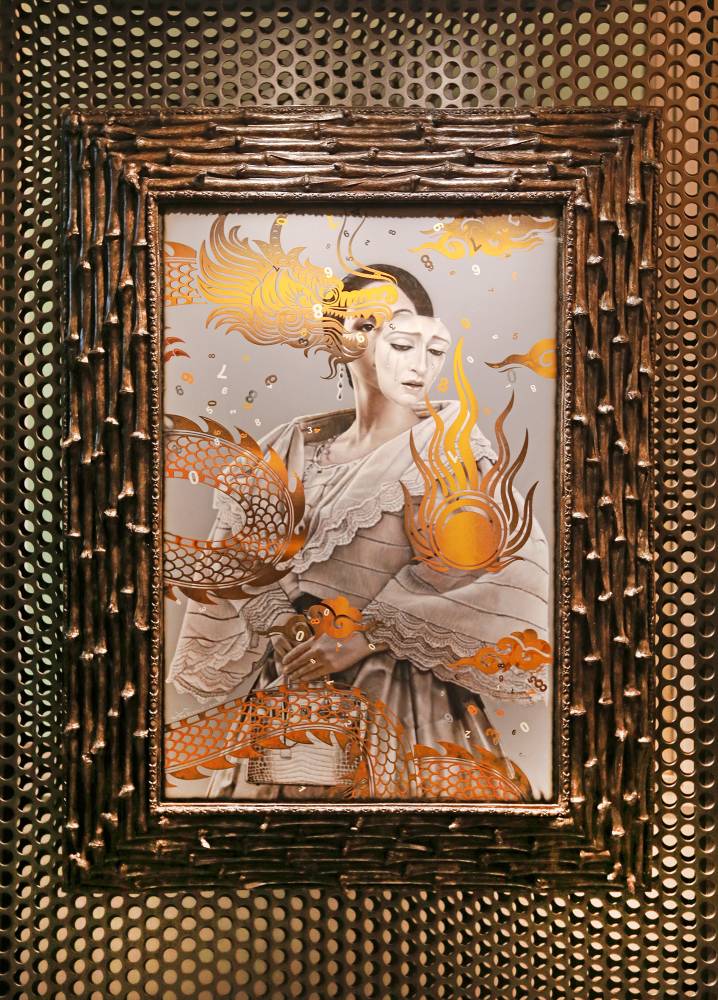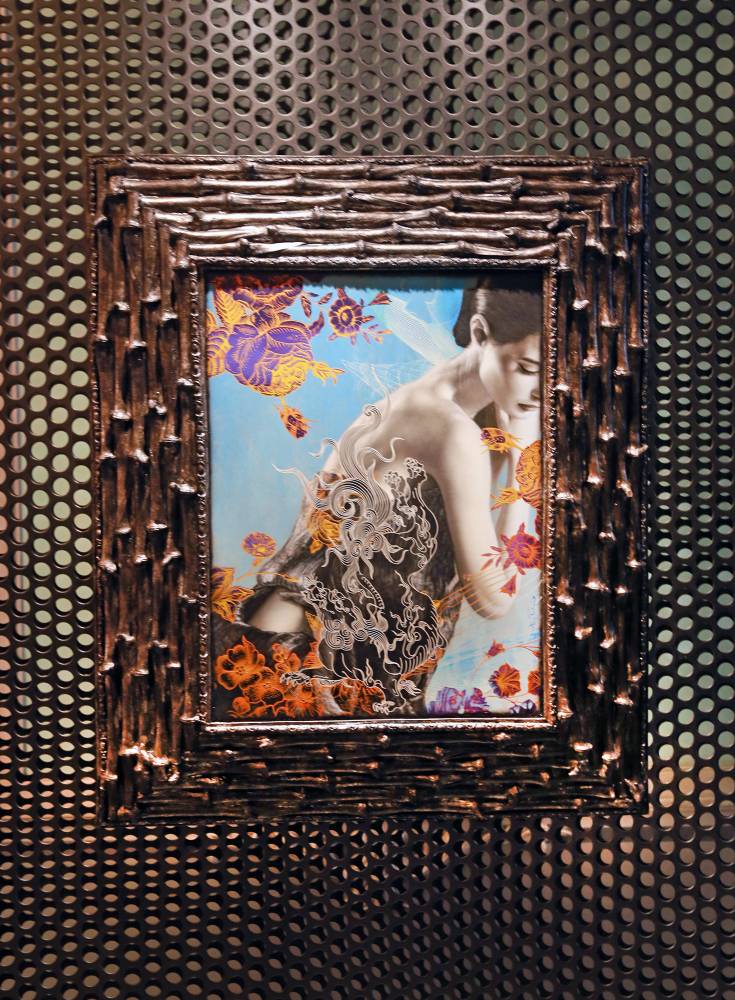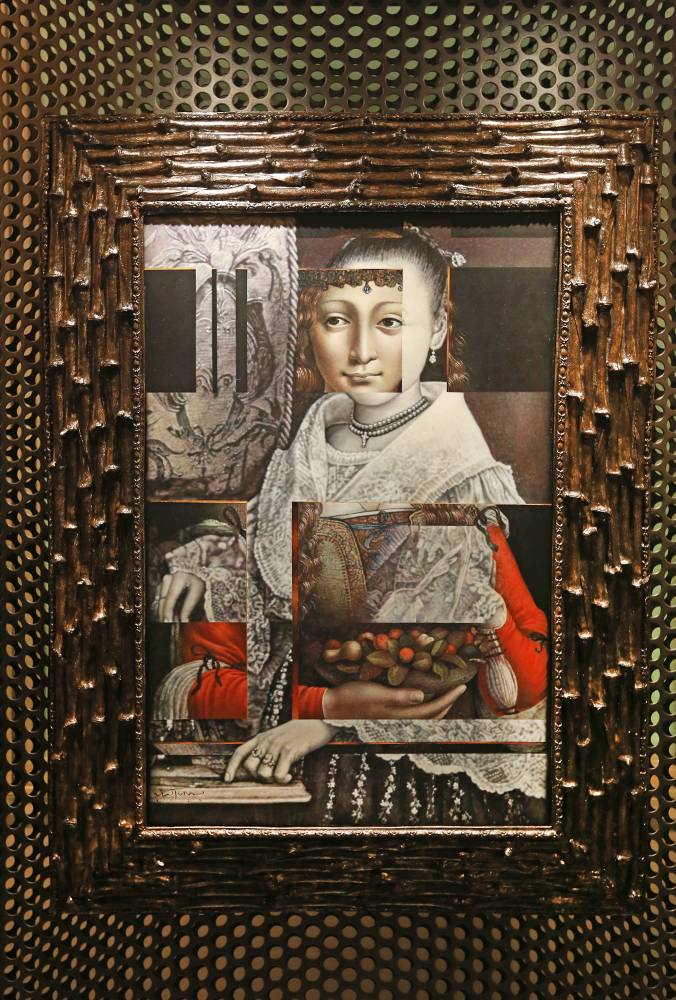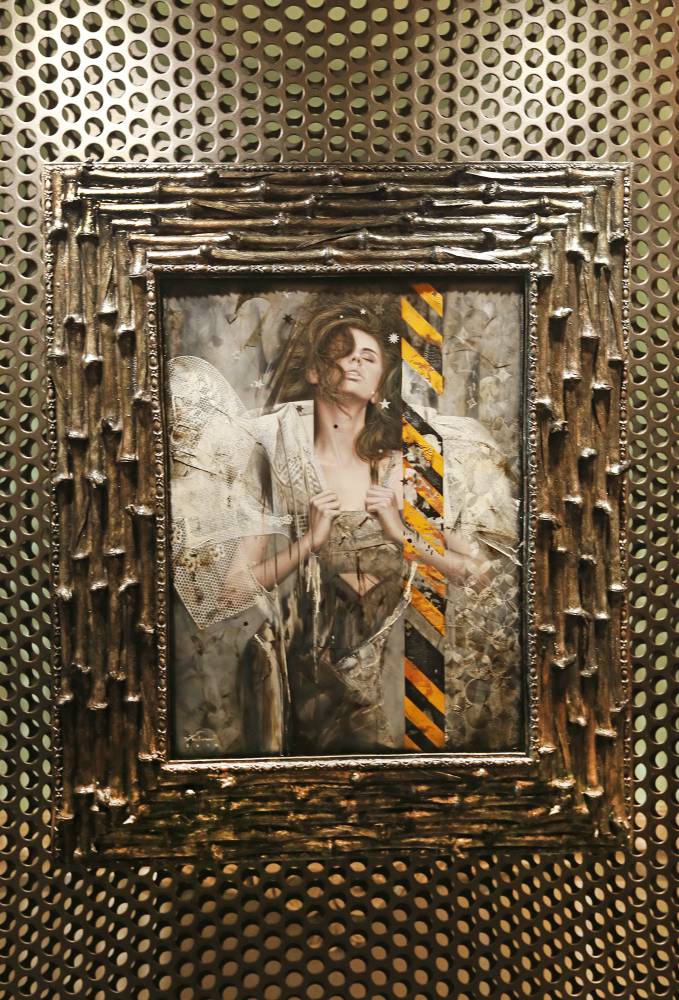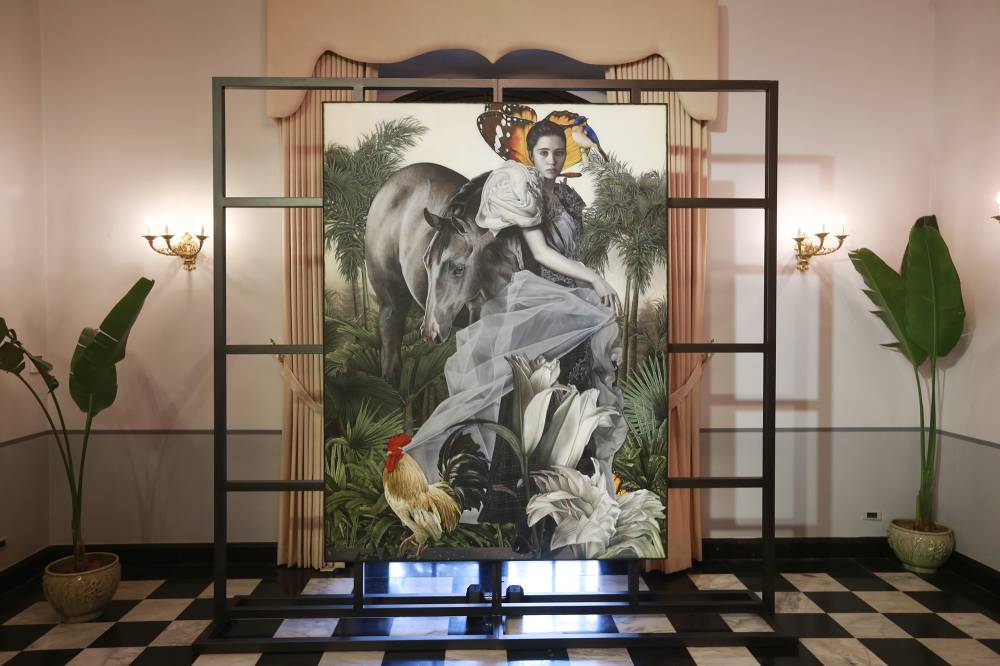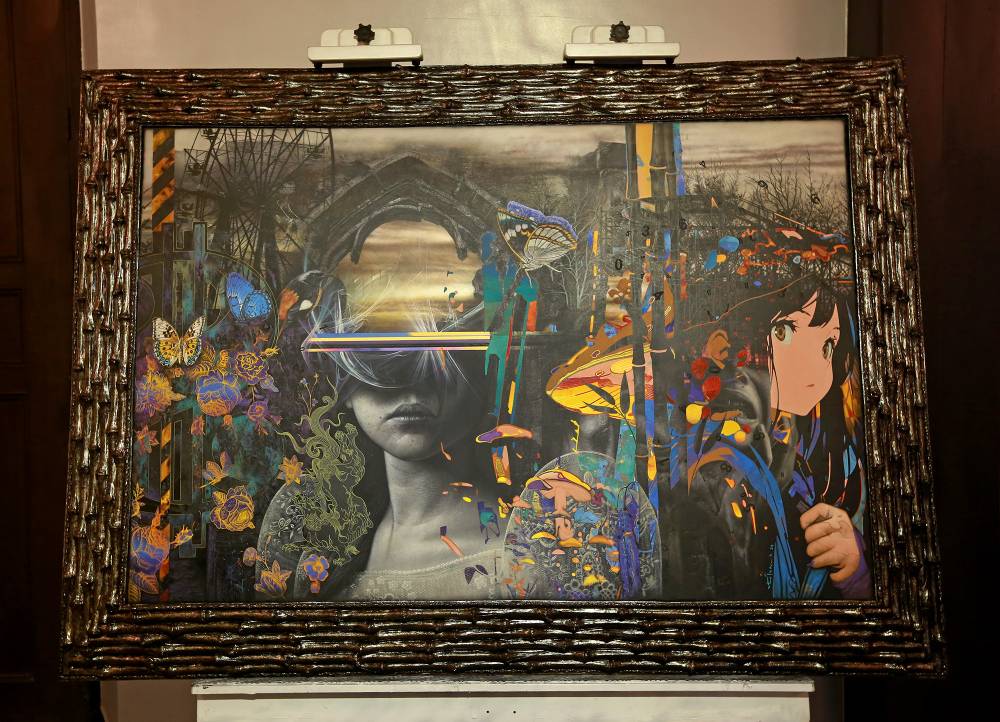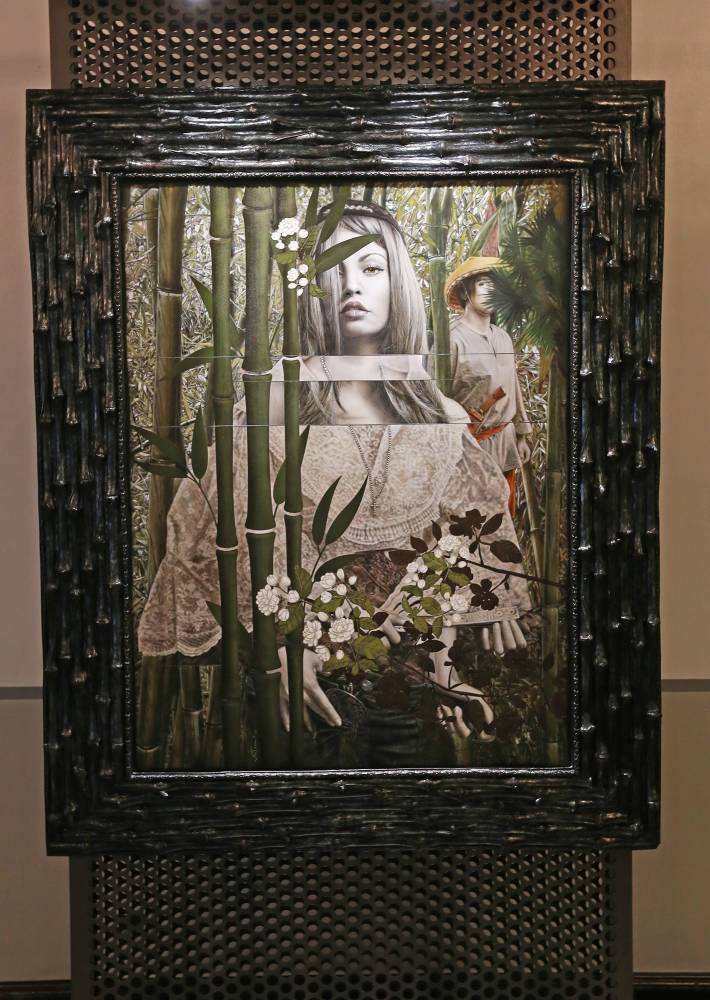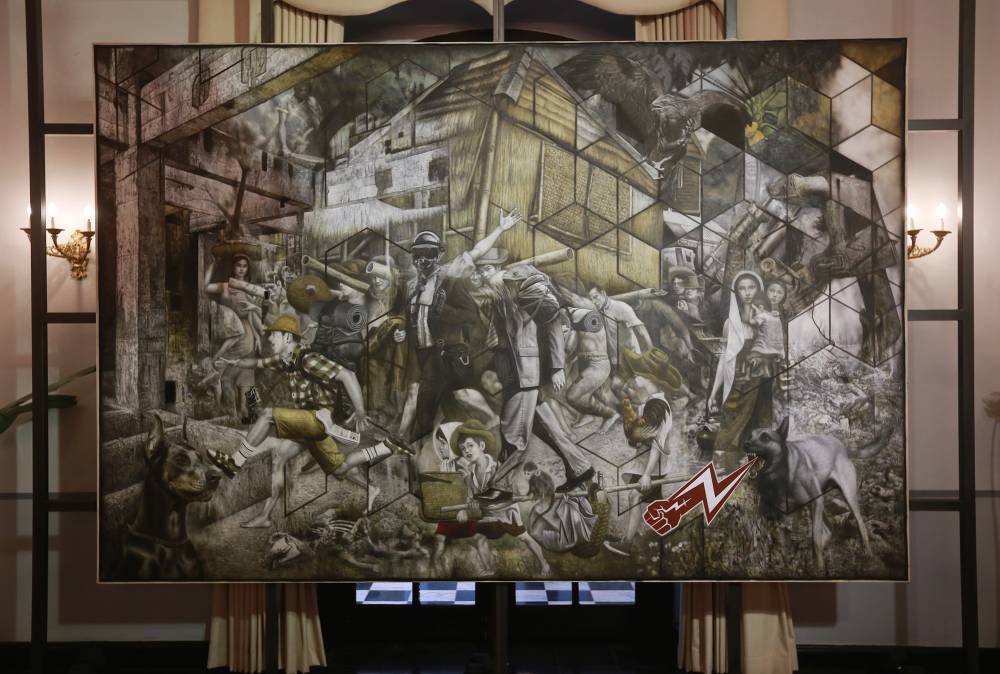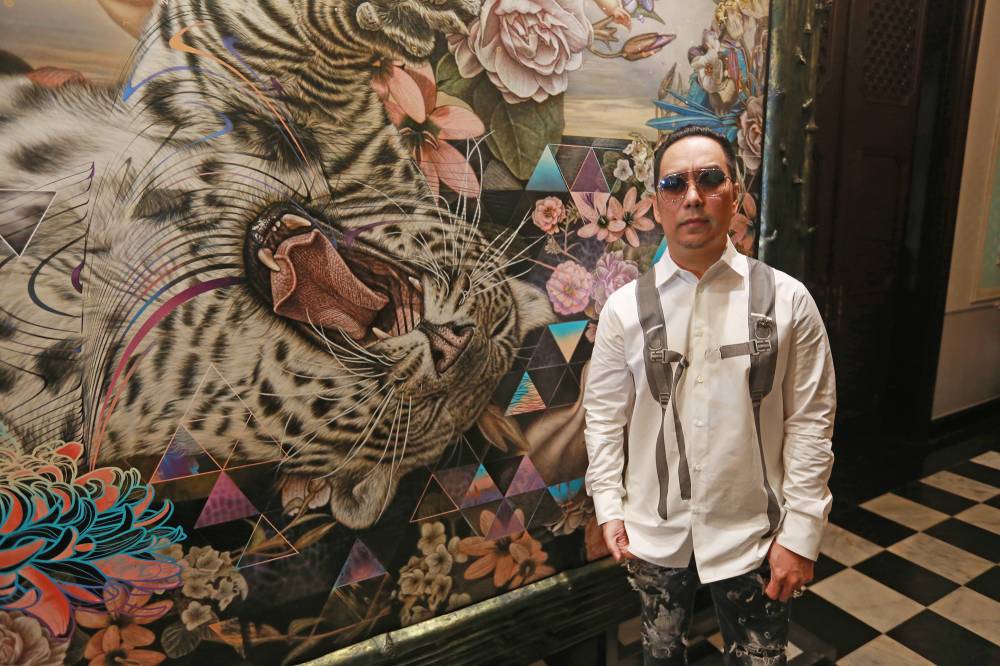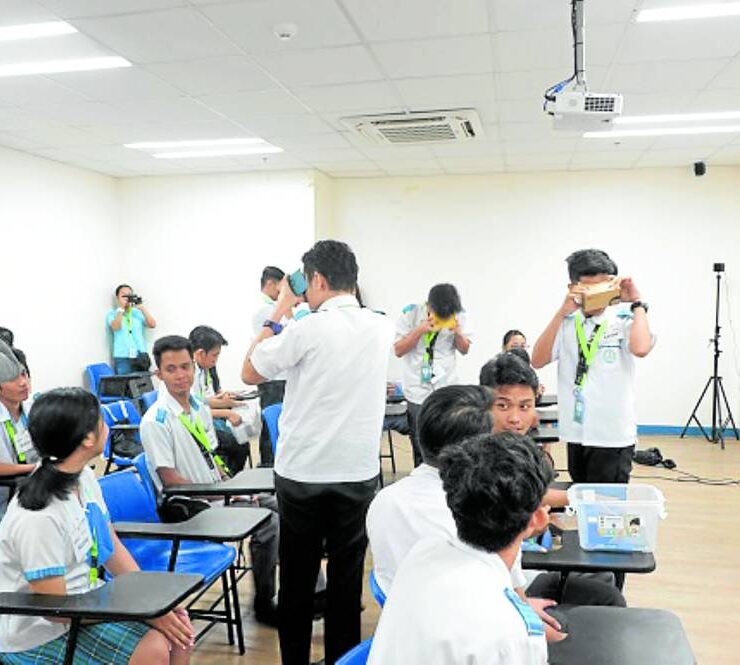Are you ready to wear a Ronald Ventura?
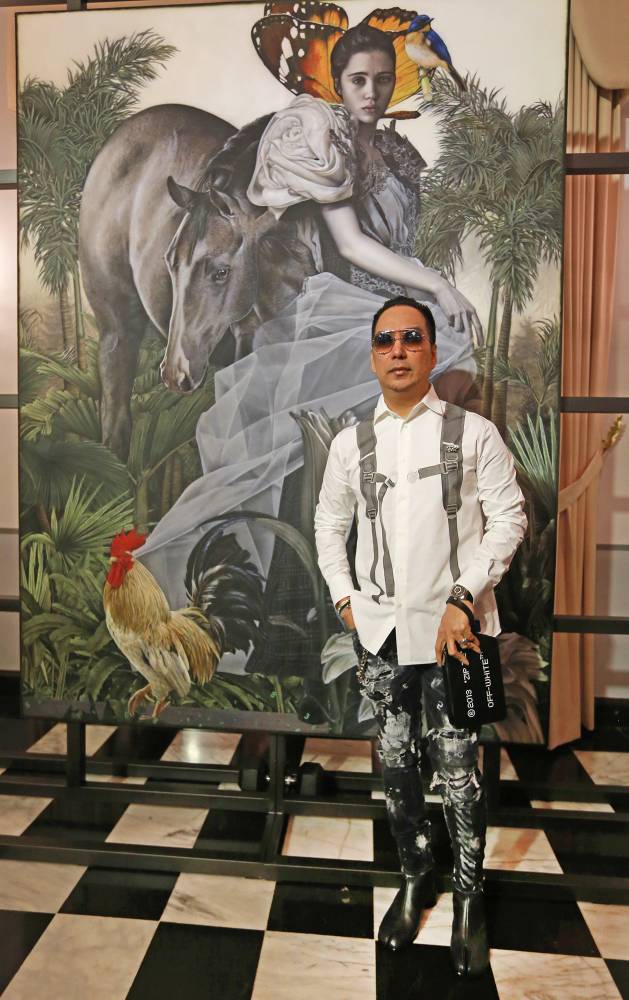
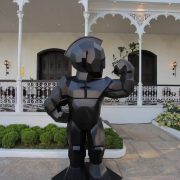

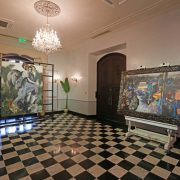
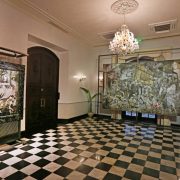 +12
+12 Not long after the ribbon was cut and the crowd had gotten a closer look at Ronald Ventura’s artworks on display inside the Goldenberg Mansion, the renowned artist would already be whisked away for photos with the new owners of some of his pieces.
It requires more than a drop in the bucket to put any of his breathtakingly detailed masterpieces on one’s wall—back in 2021, his acrylic and oil painting “Party Animal” sold for HK$19,450,000 (around P120 million at the time) at auction company Christie’s. But perhaps soon, hopefully within the year, people will be wearing his opuses on their bodies as well.
Fashion Aid Philippines Inc., a nonstock and nonprofit organization that promotes and sustains the country’s fashion and creative industry, being the beneficiary of the one-day one-man show seemed like a hint, and when Lifestyle probed further, Ventura revealed that he’s been having discussions about collaborating with fashion designers. “Something like an introduction to fashion,” he said.
It’s exciting to imagine trotting out a Ventura for events or a commute, getting more eyes on his cool commentary on the Filipino story.
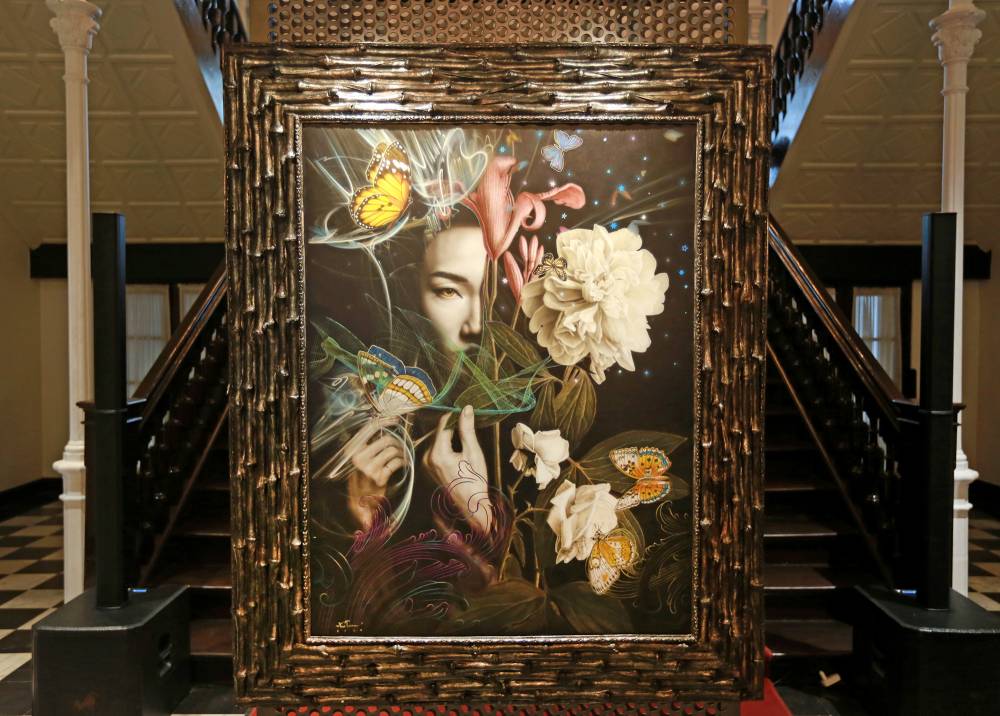
Sense of belonging
For “Astig-Mata,” the visual artist mixes archetypal Pinoy details like bamboo, bahay kubo and baro’t saya with “imported” elements like anime, dragon and a luxury brand’s world-famous monogram. Even the features of the women at the center of his works look notably mixed.
Ventura said it’s important to show history and heritage through his works to spark a sense of belonging and know that inspiration comes from our isles, our cultures. His latest ruminations on “Filipino-ness” unpacks our rich heritage where who we have been intersects with who we aspire to be in order to reveal who we are becoming—“a nation on the cusp of greatness and fulfillment of a vision.”
Ventura is already one of the leading contemporary artists in Southeast Asia, so it’s not the price tag attached to his works nor the recall he now has to his name that spells success. For him, success comes once he “conquers a painting,” every time he finishes a piece.
Until earlier that day before his exhibit opened, Ventura, who is “always creating artwork,” was still finishing up pieces for the show. But each impeccable stroke on his canvas would not betray this fact. His works are a collage of media and movements and meaning, fully reflecting his skills and talent and what it means to be a Filipino now: That there is no one Filipino face, no single Pinoy aesthetic.
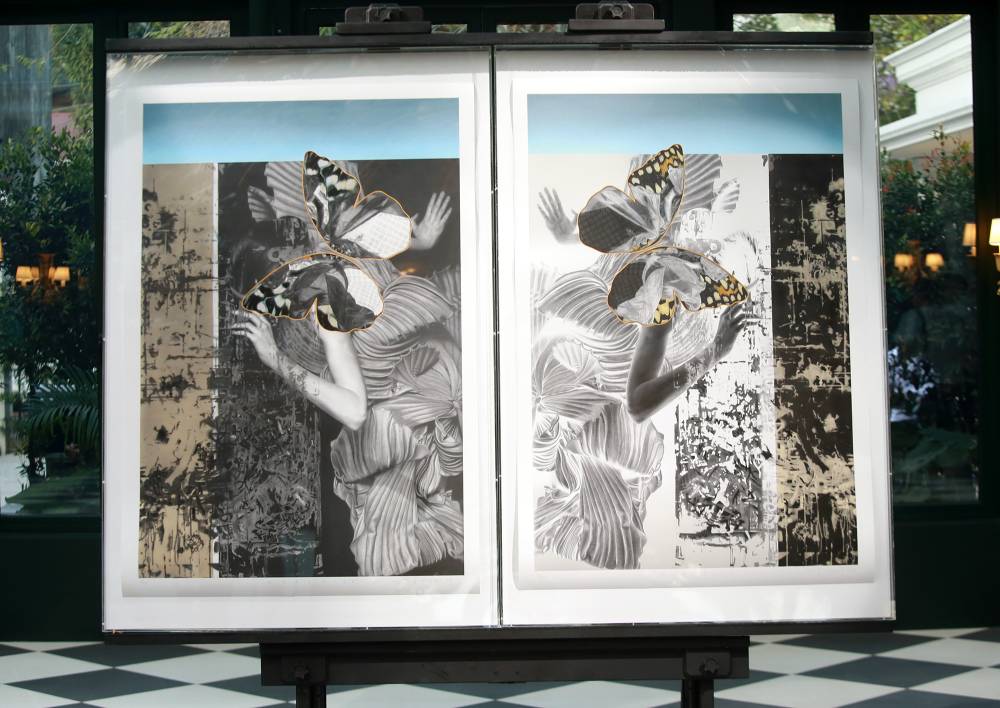
But “Astig-Mata’s” introspection reveals how the unique Pinoys’ perception of our own self and story—and our kababayan’s—arms us in overcoming tomorrow’s trials as our resilience, adaptability, ability to overcome adversities with pride, skill and grace, as well as our impeccable taste and chic remain consistent.
The first edition of The Goldenberg Mansion Art Series, “Astig-Mata” showcased two sculptures, two signed and numbered prints (only 20 pieces in existence) and 10 paintings, not to mention a mural from Ventura’s own collection titled “Bayanihan” that was not for sale. INQ













